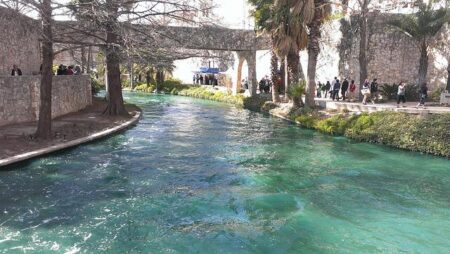San Antonio River Authority: Advancing Waterway Health and Community Stewardship
Enhancing Water Quality and Revitalizing Natural Habitats
The San Antonio River Authority (SARA) remains at the forefront of safeguarding the region’s waterways, ensuring they are clean, safe, and inviting for both residents and wildlife. By implementing cutting-edge water monitoring systems and forging strong partnerships with local organizations, SARA proactively addresses pollution sources to improve water clarity and reduce contaminants in the San Antonio River and its tributaries. Their approach integrates public education campaigns that empower community members to adopt eco-friendly habits, fostering long-term ecosystem resilience.
Beyond water quality, SARA has made remarkable progress in restoring native habitats along riverbanks. Restoration efforts include planting indigenous flora, enhancing wildlife corridors, and reinforcing riverbanks to combat erosion. These initiatives have led to notable increases in biodiversity and expanded recreational spaces. Recent restoration highlights include:
| Location | Acres Restored | Native Plants Introduced | Wildlife Population Growth |
|---|---|---|---|
| Salado Creek | 50 | 13,500 | 38% rise |
| Medina River Corridor | 35 | 9,200 | 30% rise |
| Leon Creek | 28 | 11,000 | 42% rise |
- Consistent water quality testing ensures pollutant levels remain well within regulatory limits.
- Quarterly community cleanup events actively remove litter and debris from waterways.
- Habitat connectivity projects restore ecological linkages, supporting native species migration.
- Workshops on sustainable landscaping encourage riverbank-friendly gardening practices.
Empowering Communities to Protect Local Waterways
Community involvement is a cornerstone of SARA’s strategy to maintain the health and beauty of San Antonio’s rivers and creeks. Hundreds of volunteers participate in monthly cleanup drives, educational sessions, and habitat restoration activities, cultivating a culture of environmental responsibility. This grassroots engagement is vital in curbing pollution, deterring illegal dumping, and improving water quality for recreational enjoyment.
Highlighted community initiatives include:
- Neighborhood-led trash collection campaigns
- School-based watershed education programs
- Partnerships with businesses to minimize stormwater runoff
- Citizen science projects monitoring water quality
| Program | Results | Volunteer Count |
|---|---|---|
| River Cleanup Events | Removed 12 tons of waste annually | 600+ |
| Watershed Awareness Workshops | Raised local knowledge by 35% | 350+ |
| Habitat Restoration Drives | Planted 2,500 native trees and shrubs | 180 |
Leveraging Advanced Technologies for Waterway Monitoring
The integration of innovative technologies has revolutionized how SARA monitors the condition of San Antonio’s waterways. Smart sensors installed at strategic points continuously collect data on water quality parameters, flow dynamics, and pollutant concentrations. This real-time monitoring facilitates rapid identification of contamination events or illegal discharges, enabling swift intervention. Complementary drone and satellite imaging provide comprehensive aerial views, improving access to remote or difficult-to-reach areas.
All collected data feeds into a centralized digital platform that offers interactive tools for both officials and the public. Features include:
- Live-updated water quality maps accessible online
- Automated alerts for environmental anomalies
- Longitudinal data analysis to monitor trends and emerging concerns
| Metric | Pre-Technology | Post-Technology |
|---|---|---|
| Response Time to Pollution | Approximately 48 hours | Under 2 hours |
| Accuracy in Identifying Pollutant Sources | Limited | Precise and timely |
| Community Engagement Level | Moderate | Significantly increased via interactive platforms |
How Residents Can Contribute to Waterway Preservation
The health of San Antonio’s rivers and creeks depends heavily on responsible actions by local residents. Simple everyday practices can significantly reduce pollution and protect aquatic ecosystems. Proper disposal of waste-avoiding littering plastics, cigarette butts, and food scraps-is essential to prevent contamination of storm drains and waterways. Using eco-friendly fertilizers and pesticides sparingly helps minimize chemical runoff that can harm aquatic life. Additionally, planting native species along riverbanks stabilizes soil and provides critical habitat for wildlife.
When enjoying recreational activities such as fishing, kayaking, or boating, it is important to follow guidelines that minimize environmental impact. Respecting wildlife habitats, avoiding disturbance of nesting sites, and thoroughly cleaning equipment before and after use help prevent the spread of invasive species. Below is a practical checklist for water-friendly behavior:
- Always pack out trash and recycle when possible.
- Choose biodegradable and non-toxic products for home and garden use.
- Stick to marked trails and access points to protect sensitive ecosystems.
- Participate in local waterway cleanup events to support community efforts.
| Action | Environmental Benefit |
|---|---|
| Safe Disposal of Household Chemicals | Prevents harmful runoff into waterways |
| Landscaping with Native Plants | Reduces erosion and supports biodiversity |
| Joining Waterway Cleanups | Improves habitat quality and water clarity |
| Practicing Responsible Recreation | Protects aquatic species and habitats |
Looking Ahead: Sustaining San Antonio’s Waterways for Future Generations
As environmental challenges intensify, the San Antonio River Authority’s role in preserving the region’s waterways becomes increasingly vital. Their comprehensive approach-combining habitat restoration, community involvement, and technological innovation-ensures that the San Antonio River and its tributaries remain vibrant and accessible. With the city’s population projected to grow by over 20% in the next decade, continued collaboration between SARA, residents, and stakeholders will be essential to protect these natural treasures. Together, they are building a sustainable legacy that balances ecological health with community enjoyment for years to come.




